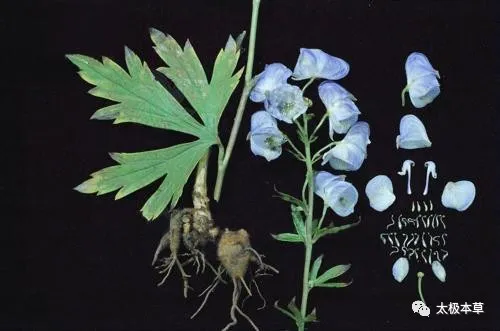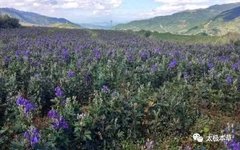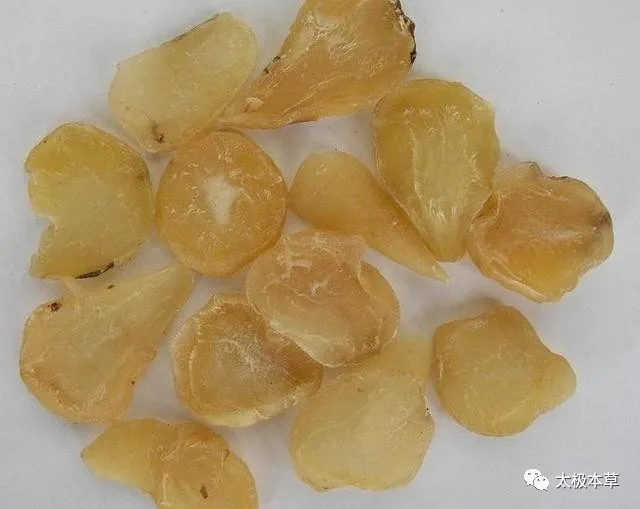
There is a reason for the name
Why is Aconite called “Fuzi”?
If we plant a clove of garlic in the ground, it will eventually grow into a large garlic bulb. However, sometimes it does not grow well, does not separate into cloves, and becomes a single bulb, which is very spicy.
Interestingly, Aconite is similar to garlic; if we take one Aconite root and plant it in the ground, after a while, the “mother” Aconite will produce small “children” around it.
However, sometimes, like the single garlic bulb, the “mother Aconite” does not produce offspring and just grows larger.
The “children” that grow attached are Aconite; the “mother” Aconite is called “Wutou”; and the one that just grows larger without producing offspring is “Tianxiong”.
Generally speaking, Aconite is pungent and warm, Wutou is hot but has a strong dispersing effect, and Tianxiong has a unique potency that surpasses the other two.
Toxic, Do Not Use Recklessly Without Professional Guidance!
Source and Origin
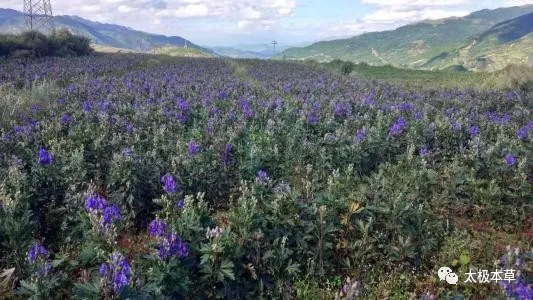
According to the “Encyclopedia of Chinese Medicine”
Aconite is the lateral tuber (child root) of the cultivated plant Aconitum (family Ranunculaceae). It is harvested from the side roots attached to the mother root between the summer solstice and the minor heat, cleaned of soil, and referred to as mud Aconite, which is processed according to size:
Salt Aconite: Select larger mud Aconite, clean it, and soak it in a mixture of brine and table salt. It is taken out daily to dry, gradually extending the drying time until a large number of crystalline salt particles appear on the surface, and the texture becomes hard.
Black Shun Pian: Select medium-sized mud Aconite, clean it, soak it in brine for several days, boil it with brine, take it out, rinse it, cut it into thick slices, then soak it in diluted brine, adding a coloring agent made from brown sugar and vegetable oil to dye the slices a deep tea color. It is rinsed until there is no spicy sensation, then steamed until cooked, dried to half-dry, and finally sun-dried.
White Aconite Slices: Select smaller mud Aconite, clean it, soak it in brine for several days, and boil it until thoroughly cooked. It is taken out, peeled, cut into thin slices, rinsed until there is no spicy sensation, then steamed until cooked, dried to half-dry, and finally sulfur-fumigated and sun-dried.
“Chinese Herbal Medicine” Edited by Ling Yiqi
Aconite (“Shennong’s Herbal Classic”)
【Nature and Taste】Pungent, hot; toxic. Enters the Heart, Kidney, and Spleen meridians.
【Functions】Revives Yang, rescues from collapse, supplements fire to assist Yang, disperses cold, and alleviates pain.
【Applications】
1. For Yang collapse syndrome, symptoms include cold sweat, cold limbs, and a faint pulse. Aconite can assist Heart Yang to open the vessels and supplement Kidney Yang to nourish fire, rescuing the lost original Yang, making it a key medicine for reviving Yang and rescuing from collapse. It is often used with dried ginger and licorice to enhance the effect of reviving Yang and rescuing from collapse, known as Si Ni Tang; if Yang is weak and Qi is lost, with profuse sweating and shortness of breath, it can be used with ginseng to restore Yang and stabilize collapse, known as Shen Fu Tang.
2. For Yang deficiency syndrome. This herb is good at supplementing fire and assisting Yang, suitable for any organ with weak Yang Qi, such as Kidney, Spleen, and Heart. If there is insufficient Kidney Yang, with cold limbs, lower back pain, weakness, impotence, and frequent urination, it is often used with cinnamon, cooked rehmannia, and cornelian cherry, such as Gui Fu Ba Wei Wan; if there is internal cold and Spleen Yang is weak, with cold abdominal pain and loose stools, it can be used with ginseng, Bai Zhu (White Atractylodes), and dried ginger, such as Fuzi Lizhong Wan; if there is Spleen and Kidney Yang deficiency with water retention, leading to difficulty urinating and edema, it can assist Yang in transforming Qi, often used with Bai Zhu and Fu Ling (Poria), such as Zhen Wu Tang; if Heart Yang is weak, with palpitations, shortness of breath, and chest pain, it can be used with ginseng and cinnamon twig. Additionally, for spontaneous sweating due to Wei Yang deficiency, it can be used with Huang Qi (Astragalus) and cinnamon twig; for Yang deficiency with external wind-cold, it can be used with Ma Huang (Ephedra) and Xi Xin (Asarum), etc. In summary, Aconite can warm the Yang of the whole body, applicable for all Yang deficiency cases.
3. For Bi pain. It is suitable for cases with predominant cold-dampness and severe joint pain, as it can dispel cold-dampness, warm the meridians, and alleviate pain. It can be used with cinnamon twig and Bai Zhu, such as Gan Cao Fuzi Tang.
【Dosage】3-15g. In decoctions, it should be boiled for 30-60 minutes to reduce its toxicity.
【Cautions】Not suitable for pregnant women.
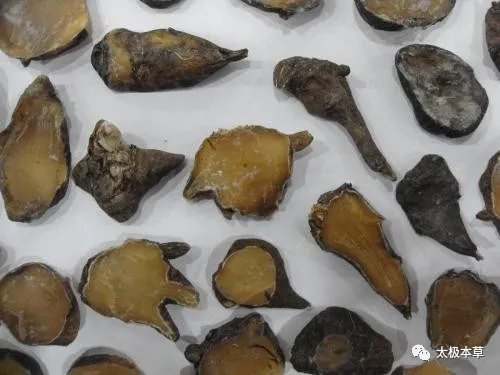
The Three Realms of Aconite
1. Basic Usage: Warming Yang
The most straightforward use of Aconite is to warm Yang.
Aconite has a pungent and warm nature, primarily targeting the lower jiao (lower abdomen) to warm the kidneys, but its properties can also reach the middle and upper jiao, thus it can warm the heart and spleen as well.
Therefore, we often use it to treat issues related to fear of cold and cold intolerance. It is effective for Yang deficiency or cold stagnation, such as Kidney Yang deficiency and Spleen Yang deficiency, as well as joint pain and abdominal pain caused by cold invasion.
Moreover, Aconite’s warming power is strong, and it is not an exaggeration to say it is unparalleled among herbs; it is also known as the “best medicine for reviving Yang and rescuing from collapse,” meaning that even in cases where Yang Qi is about to collapse or Yin cold is extremely strong, Aconite’s heat can still turn the tide.
However, there is a saying: “Aconite cannot warm without ginger.” This summarizes it very well.
Although Aconite is powerful, its nature is dispersive, so its effects are short-lived, similar to a sushi torch used in Japanese cuisine; it creates a charred surface quickly, but the inside remains raw. For mild cases of Yang deficiency and cold exposure, it may suffice, but for severe cases, this fleeting heat is clearly insufficient.
In such cases, we need to bring in “the one that can both disperse and hold,” which is dried ginger, to work with Aconite, using Aconite’s fire to ignite dried ginger’s heat, thus providing a long-lasting and stable warming effect on Yang Qi. This is the pairing method in Si Ni Tang.
2. Intermediate Usage: Generating Qi
I am not saying that using Aconite will make people angry… This refers to using it to generate “Qi and Blood.”
Aconite is not ginseng, so how can it generate Qi?
The Qi in a person’s body is derived from essence. If we view a person as a city, then essence is the oil, and Qi is the gasoline refined from it; with gasoline, a city can operate normally.
Similarly, with Qi, a person has vitality, and the organs can function. Essence does not directly drive the body’s operations, but it is limited; once used up, Qi is gone, and the person collapses. Therefore, both essence and Qi are important.
Essence is primarily stored in the kidneys, and Aconite can enter the kidneys to warm Yang, enhancing the efficiency of transforming essence into Qi. Thus, Aconite, unlike ginseng which can tonify Qi, has the function of a refinery, assisting in generating Qi.
However, two points must be noted: first, Aconite should not be used in excess; a small amount of about 3 grams is sufficient to slightly stimulate essence (strong fire disperses Qi, while a little fire generates Qi);
second, Aconite is dispersive, so it should be paired with the stabilizing cinnamon, ensuring both herbs stay in the lower jiao and focus on their work.
With the stimulating Aconite and cinnamon, plus the essence-replenishing cooked rehmannia, we form a combination of “oil + refinery” that has the capacity to produce Qi explosively, and the classic Shen Qi Wan utilizes this approach.
3. Advanced Usage: Warming the Kidneys and Receiving Qi
